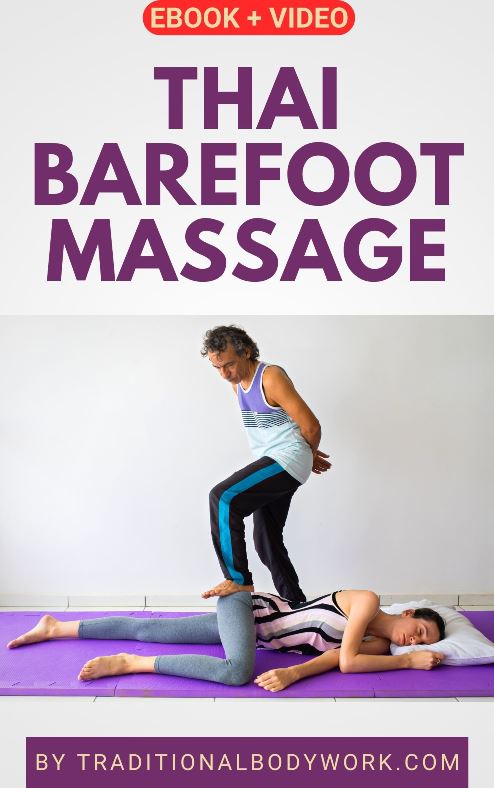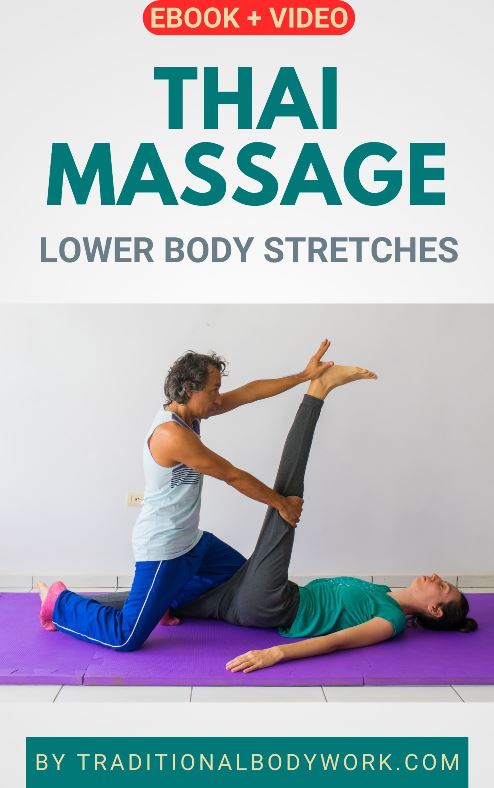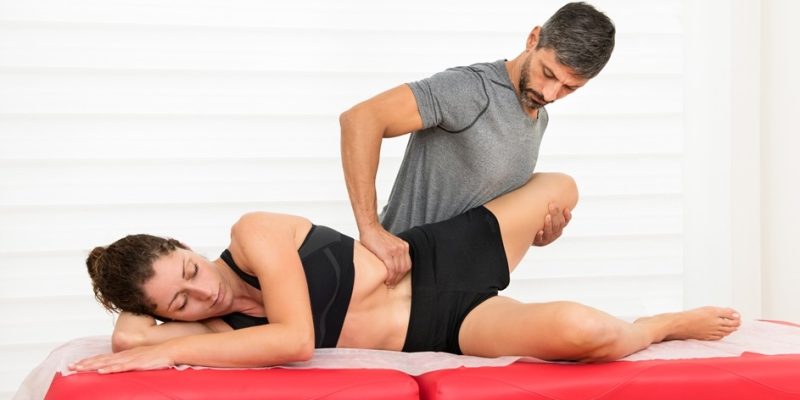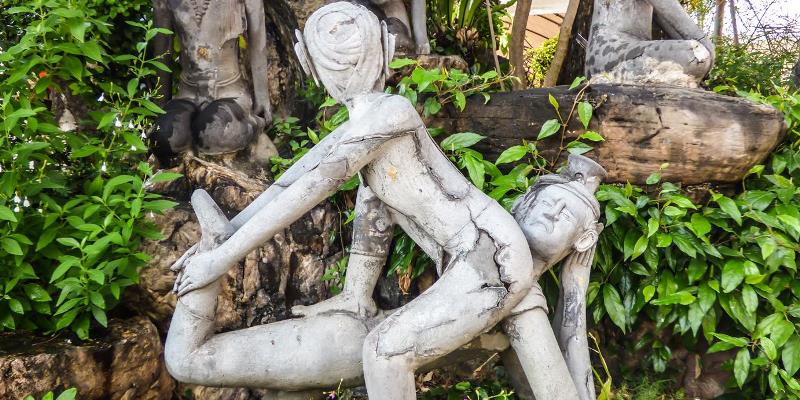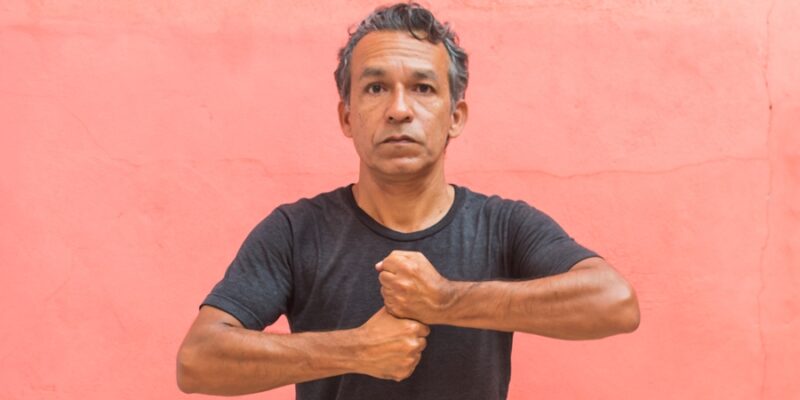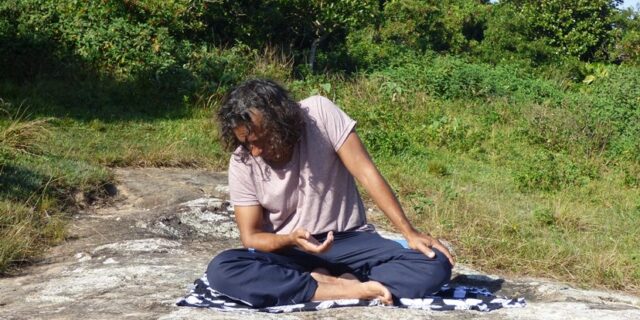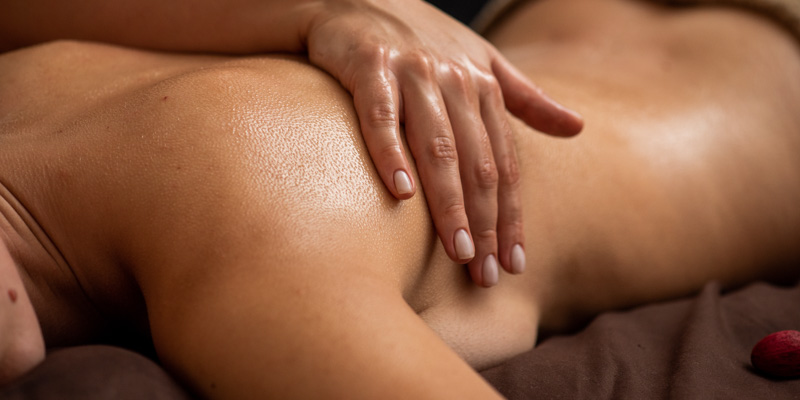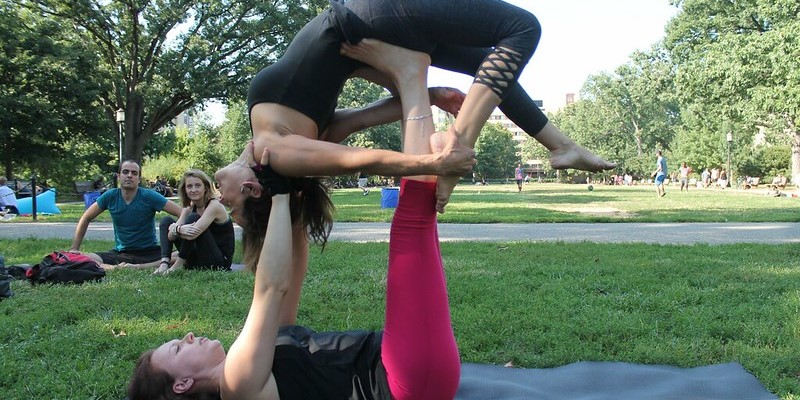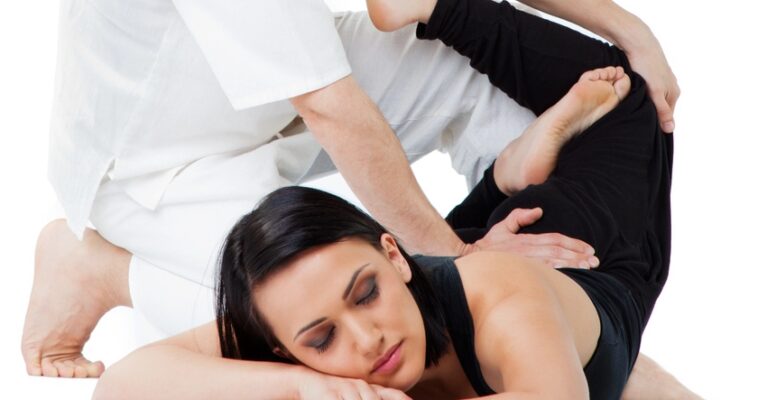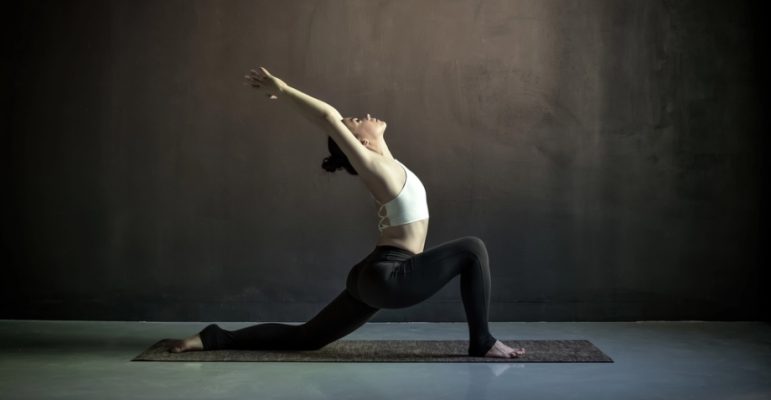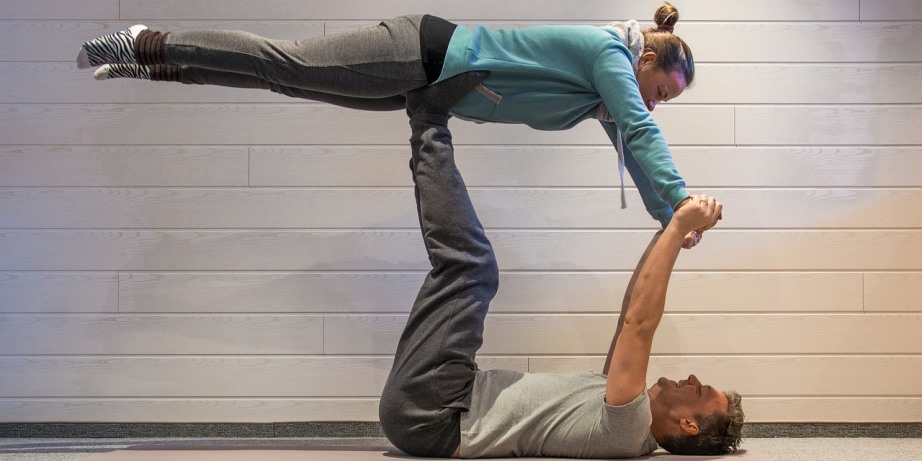
In this post, we’ll take a look at the similarities and differences between AcroYoga, Partner or Couples Yoga, and traditional Thai Massage.
AcroYoga
Acroyoga, also written as two words Acro Yoga, is a physical bodywork practice that combines Yoga and acrobatics, and in some styles integrates with Thai Massage.
It’s typically done with a partner, where one person is lifted and the other usually lies or sits on the ground. There are similarities with certain aspects of the circus arts, cheer-leading, Thai Yoga Massage, dance acrobatics, and Aerial Yoga.

When doing AcroYoga there are in fact three roles involved — a base, a flyer, and a spotter role.
The Base role is done by the person who has the most points of contact with the ground. It’s the active side of the equation. Often this person is lying on the ground with the entire back in full contact and the legs up. The usual points of contact with the flyer are the feet and the hands.
The Flyer role, that is, the passive side of AcroYoga, is taken by the person who is lifted off the ground by the Base-person. The Flyer moves or is positioned into a series of dynamic positions, and needs balance and confidence.
The Spotter finally is the one who checks on Base and Flyer to make sure that the Flyer lands safely in case of any slips and falls.
Partner Yoga
The main difference with AcroYoga is that with Partner Yoga both practitioners — the partners — are active. Partner Yoga is also called Couples Yoga. Usually, there are a lot of Yogic stretches and traction involved, but no massage. Lifts are more rare.
Partner Yoga also has some roots in Tantric lineages. The idea there is that Partner Yoga, seen as a form of intimate touch, also embraces the philosophy of using a relationship or partnership as a technique for awakening to our true nature. In this case, Partner Yoga is rather seen as a spiritual practice.
Traditional Thai Massage
Thai Massage shows elements of AcroYoga and Partner Yoga. It’s true that in Thai Massage there are some moves and techniques that involve lifting the client off the ground and have some “acrobatic” appearance. The Thai Massage practitioner then basically assumes the role of the Base person.

Typical exercises in Thai Massage that incorporate those are the so-called bridge-stretches and cobra-stretches.
There are also exercises in Thai Massage where the client needs to “help,” and by the way, there are Thai Massage techniques that are Yogic exercises for the therapist. If the latter is the case, the client is in fact “used” for the benefit of the Thai masseur. It’s then basically more like Partner Yoga, but typically, in Thai Massage, the receiver assumes the passive side of the work.
Another aspect of Thai Massage, and that’s why it’s sometimes also called Thai Yoga Massage, is so-called “assisted stretching” of which quite a few of the stretches are derived from Yoga poses and moves.
When Acroyoga is practiced as a form of therapeutics i.e. “therapeutic flying” it incorporates even more elements of Thai Massage to, for instance, open-up and stretch the back and hips, or relax the arms and legs. This style of AcroYoga is sometimes labeled Flying Yoga, Flying Therapeutics, or even Flying Thai Massage.
Contemporary Developments
Today, we see many AcroYoga events that also offer Thai Massage workshops and/or combine AcroYoga with elements of Thai Massage. There are quite a few Thai Massage practitioners who ventured into AcroYoga, and moreover, a bunch of AcroYoga practitioners who started practicing Thai Massage.
The same counts for the many yearly international Yoga conferences and events, where Yoga, AcroYoga and Thai Massage increasingly blend together.



